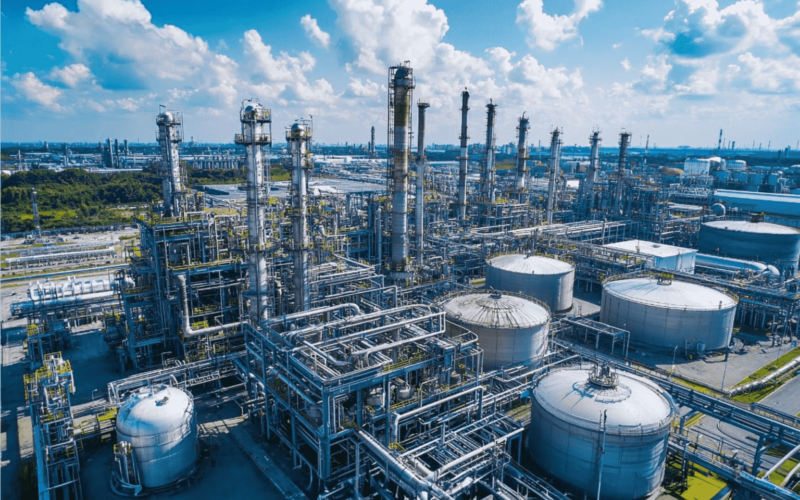Despite years of commitments from oil and gas companies, methane emissions and flaring from the industry remain at near-record levels. In response to this ongoing challenge, the International Energy Agency (IEA), the UN Environment Programme’s International Methane Emissions Observatory (IMEO), and the Environmental Defense Fund (EDF) have unveiled a comprehensive new framework to support and track progress by oil and gas companies worldwide in achieving necessary emissions reductions aligned with the Oil and Gas Decarbonization Charter (OGDC).
Launched at last year’s UN climate talks (COP28) in the UAE, the OGDC now includes 54 participating companies and aims to help the entire industry accelerate its climate change efforts. This independent methane accountability initiative, created by the IEA, IMEO, and EDF, will oversee industry-wide efforts, monitor progress, and ensure that companies fulfill their commitments.
“To achieve steep cuts in methane pollution, producers must make changes now. These investments take years to implement. This accountability framework will help assure that oil and gas companies deliver the necessary reductions in time. No one can wait until 2030 and wave a magic wand. We need to see progress every year, with companies showing their work along the way,” said Fred Krupp, President of the Environmental Defense Fund.
Methane is a significant driver of climate change, accounting for at least 30% of current global warming. If fully implemented, the OGDC commitments could lead to a 15% reduction in upstream methane emissions by 2030. Should all top 100 producing companies, including OGDC signatories, adopt similar measures, global upstream oil and gas methane emissions could be halved by 2030.
“Recent commitments, such as the OGDC, represent a tangible step forward for oil and gas companies looking to align their operations with the Paris Agreement. Now, companies must quickly transform their promises into action,” said IEA Executive Director Fatih Birol.
“Methane emissions from fossil fuel operations are a major contributor to global warming, and tackling them is one of the fastest and lowest-cost ways to keep climate change in check. This new initiative will ensure accountability and transparency across the entire oil and gas industry and help deliver meaningful progress soon,” Birol added.
The IEA estimates that oil and gas operations emitted nearly 80 million tonnes of methane in 2023, roughly equivalent to 120 billion cubic meters of natural gas. This level of emissions has remained consistent for over a decade, with approximately 150 billion cubic meters of natural gas flared globally in 2023.
Reducing methane emissions and flaring is a critical test of the oil and gas industry’s commitment to climate action, given the substantial mitigation opportunities available and the cost-effectiveness of the solutions. The OGDC’s success is vital for enhancing the industry’s collective efforts to combat climate change.
“The warming climate is harming human health, food systems and natural habitats, bringing enormous cost to societies. Cutting methane emissions is a crucial way to reduce these impacts as the clean energy transition continues,” said Inger Andersen, Under-Secretary-General of the United Nations and Executive Director of UNEP.
The new framework emphasises detailed planning and execution by oil and gas companies, focusing on year-over-year improvements and providing much-needed transparency for financial institutions, government agencies, commercial gas buyers, NGOs, and the public. Companies are expected to follow the reporting protocols established by the Oil & Gas Methane Partnership (OGMP), which is the only comprehensive measurement-based international reporting framework for the sector.
The IEA, IMEO, and EDF will publish an independent annual assessment of OGDC signatories and other global producers, tracking their progress against the new metrics. The inaugural scorecard is set for release next year and will evaluate whether companies have established the necessary targets, plans, and reporting processes.
Subsequent scorecards will quantitatively assess each company’s adherence to the OGDC, align with the goal of limiting warming to 1.5 °C, and monitor progress toward established targets.
Transparency regarding emissions levels and mitigation actions will be essential for the industry to assure stakeholders of its progress. This includes reporting empirical methane emissions data using robust measurement standards, such as those developed by the OGMP 2.0. These data, combined with new remote sensing technologies like EDF’s MethaneSAT and Carbon Mapper’s Tanager Satellite, will enhance the accountability of industry commitments.
The framework includes 25 metrics to provide a comprehensive view of the oil and gas sector’s progress in meeting its commitments, covering emissions reductions, clean energy investments, methods to achieve targets, and the evaluation of how companies disclose relevant information regarding their OGDC commitments.
This framework represents the first outcome of an independent methane accountability initiative launched at COP28. By merging transparency and accountability with advanced data analytics, it seeks to make methane emissions from the oil and gas sector visible and quantifiable, engage emerging economies in addressing methane leakage, and advocate for stronger governmental policies and regulations on methane trade and purchases globally.






















